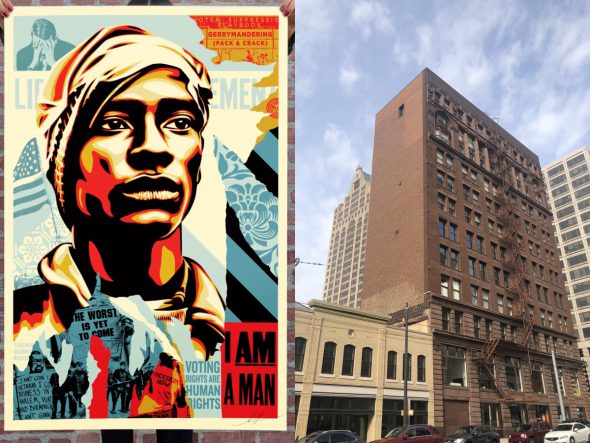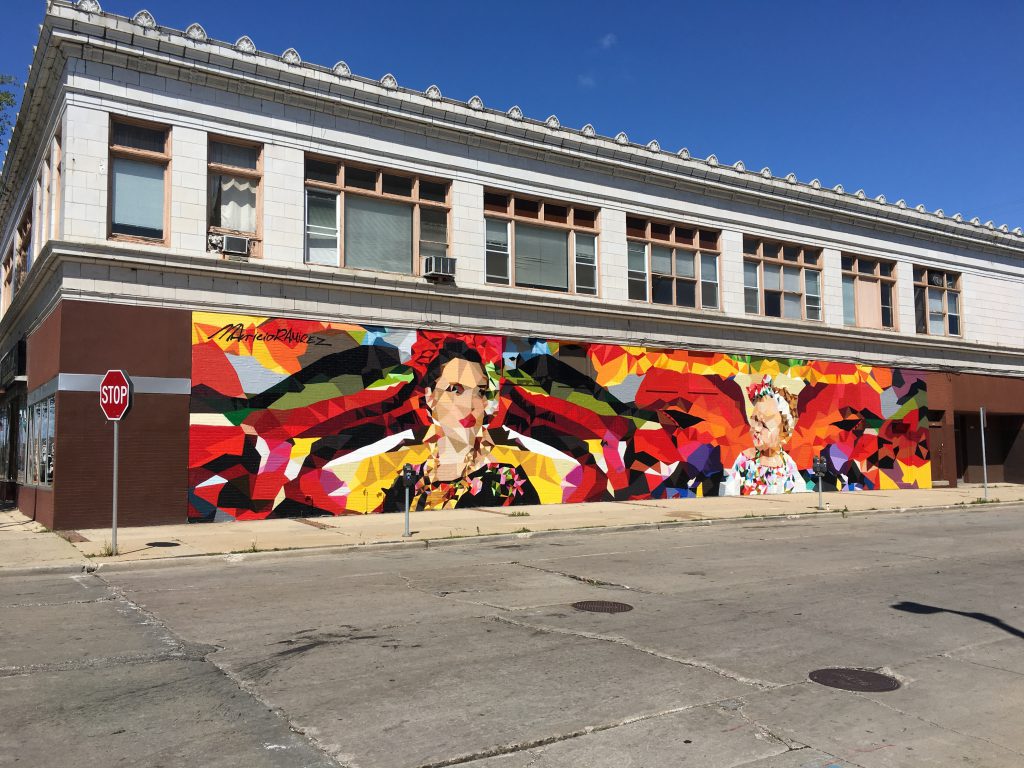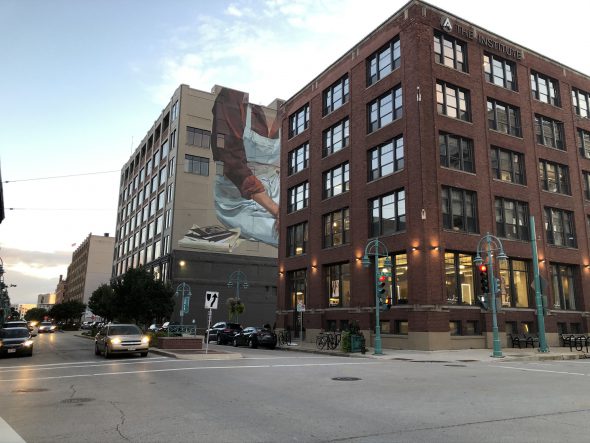Historic Commission Adopts Mural Guidelines
Guidelines would prohibit murals on historic buildings on all but the least seen sides.
The proliferation of murals in Milwaukee has created a new challenge – what to do when the building itself is treated as art?
The city’s Historic Preservation Commission adopted a set of guidelines Wednesday afternoon intended to provide a framework for how and when a mural could be applied to a building the city has designated as historic.
The lack of such a framework became an issue in October 2019 when it was discovered that a mural had been painted directly on a protected building on W. Historic Mitchell St.
The modification was made without the necessary Certificate of Appropriateness from the commission, but even if the commission wanted to grant one it had no guidelines for how to do so. Plenty of guidelines exist for everything from replacement railings to windows, but nothing for murals.

Voting Rights are Human Rights (left), the Railway Exchange building. Images by Shepard Fairey, Stacey Williams-Ng.
With promised guidelines not yet developed, Commissioner Patti Keating Kahn sought to have a large voting rights mural applied to her Railway Exchange Building in advance of the August 2020 Democratic National Convention. Her co-commissioners unanimously shot down the piece, citing the lack of guidelines. But the move also allowed the commission to avoid a letter signed by 130 people, many local artists, objecting to the plan largely because of the national artist that was to have painted it.
So with guidelines now drafted by a subcommittee, the commission scheduled a special meeting and public hearing to adopt them. But only one member of the public came to testify, Milwaukee Preservation Alliance Executive Director Jeremy Ebersole. The city’s leading preservation advocacy group endorses the guidelines.
“That’s amazing. That’s just terrific,” said commission chair Sally Peltz, expressing disbelief that no one else showed up to testify.
So what actually are the guidelines? The commission spent little time discussing the actual proposal.
In brief, the guidelines call for murals to only be painted on side walls that lack historic details and be painted on removable materials if the wall hasn’t been previously painted.
Murals are only be applied to a single side of a building and must not cover windows, doors or cornices.
Those regulations would prohibit the Mitchell Street mural, even if it was to be painted on removable wood panels. It covers windows and doors and is on a side of the building that has architectural detailing.
Another area of the guidelines deals with size.
“We believe this may be overly restrictive in some locations, and may also create unintended consequences based on our experience with implementing the requirements of the signage portion of the zoning code,” wrote planning manager Sam Leichtling.
Leichtling also cautioned against the guidelines that prohibit murals on walls that “directly face or are parallel to sidewalks and public rights of way.”
“This standard as proposed would appear to significantly limit the ability to place murals on side walls that are adjacent to alleys, corner surface parking lots, or corner vacant lots and there are multiple examples from across the City demonstrating that these can be highly suitable locations for murals,” Leichtling wrote.
Leichtling, nor any other representative of DCD, was unable to attend the meeting to address the concern.
Keating Kahn appears unable to have a mural painted on the south side of the Railway Exchange Building under the guidelines. It is a side wall that lacks historic detail and has almost no windows. But is it street facing? You can see it from E. Michigan St. to the south, which it parallels, but only because the buildings in between are significantly shorter. Read to the letter of the law, no mural would be acceptable on that wall, nor the west-facing wall that previously had a large advertisement painted on it long before the building was designated historic, they face a street.
The Unsung Hero mural in the Historic Third Ward, an area which has separate design guidelines through an architectural review board, could be interpreted as an example Leichtling was referencing. Overlooking a parking lot from the side of a building at 320 E. Buffalo St., it is clearly visible from the street to the east and from parallel streets to the north. It was permitted by a board that has interlocking members with the Historic Preservation Commission. But the commission’s guidelines wouldn’t permit any similar pieces on historic buildings.
Is that the intent of the guidelines? The commission punted on DCD’s letter, planning to revisit the measure as a future amendment or allowing the Common Council to deal with it when it takes up the guidelines.
“There will probably be questions, but I think this is a good start,” said Peltz.
There is one thing that is intentionally left out of the guidelines. “Let me caution all of you this doesn’t refer to content or design,” said Peltz.
The commission voted unanimously to adopt the guidelines. The Common Council will next review the proposal.
A copy of the guidelines and comments can be found in Legistar.
Eyes on Milwaukee
-
Church, Cupid Partner On Affordable Housing
 Dec 4th, 2023 by Jeramey Jannene
Dec 4th, 2023 by Jeramey Jannene
-
Downtown Building Sells For Nearly Twice Its Assessed Value
 Nov 12th, 2023 by Jeramey Jannene
Nov 12th, 2023 by Jeramey Jannene
-
Immigration Office Moving To 310W Building
 Oct 25th, 2023 by Jeramey Jannene
Oct 25th, 2023 by Jeramey Jannene























